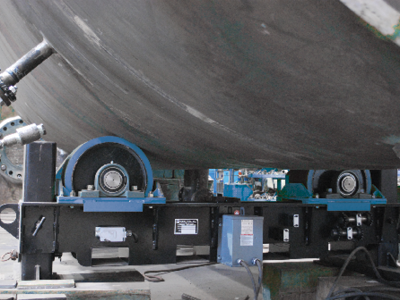How Welding Positioners Help to Improve Operational Throughput, Quality and Safety
Improving throughput, quality and safety are challenges that today’s manufacturers are constantly facing. The larger the weldments and fixtures, the larger the hazards and the greater the frustration with out-of-position orientation.
The use of weld positioning equipment is one way that fabricators can make parts more quickly and safely than with standard material handling equipment. Welding positioners which include gear tilt positioners, pipe turning positioners, headstock and tailstock positioners and bench top positioners facilitate higher productivity, improve ergonomics and help increase profitability due to reduced material waste. Let’s take a more in-depth look at some of the additional benefits of welding positioners.
Improved Quality Welds and More Consistent Results

Positioners play a significant role in material handling, ultimately improving the quality of welding by facilitating optimal positioning of the workpiece. This enables the welder to maintain a consistent angle and distance from the workpiece, which ultimately results in more consistent and higher quality welds. Additionally, positioners reduce the need for manual repositioning of the workpiece, which minimizes distortion and leads to a more precise final product.
Reduced Risk of Injury
Welding positioners also allow welders to rotate the workpiece, allowing them to reach all sides of the weldment and reducing heavy lifting. This helps reduce strain on welders, improves ergonomics and allows them to weld in a more comfortable position. This not only allows the welding to be done with more focus and skill, but also decreases the chances of injury or accident.
Time Efficiency
Welding positioners enable faster fabrication times. They help to reduce time spent on setup by allowing workers to easily rotate and tilt pieces into optimal positions for welding. This reduces manual effort and enables operators to move quickly from one job to another, increasing throughout and productivity.
Reduced Material Waste
As we mentioned previously, when the weldment is positioned optimally, it helps to create more accurate and uniform welds. Consistency across multiple welds helps to ensure better quality control and minimize overwelding. This leads to reduced material waste such as filler metals as well as time and labor spent on rework.





























